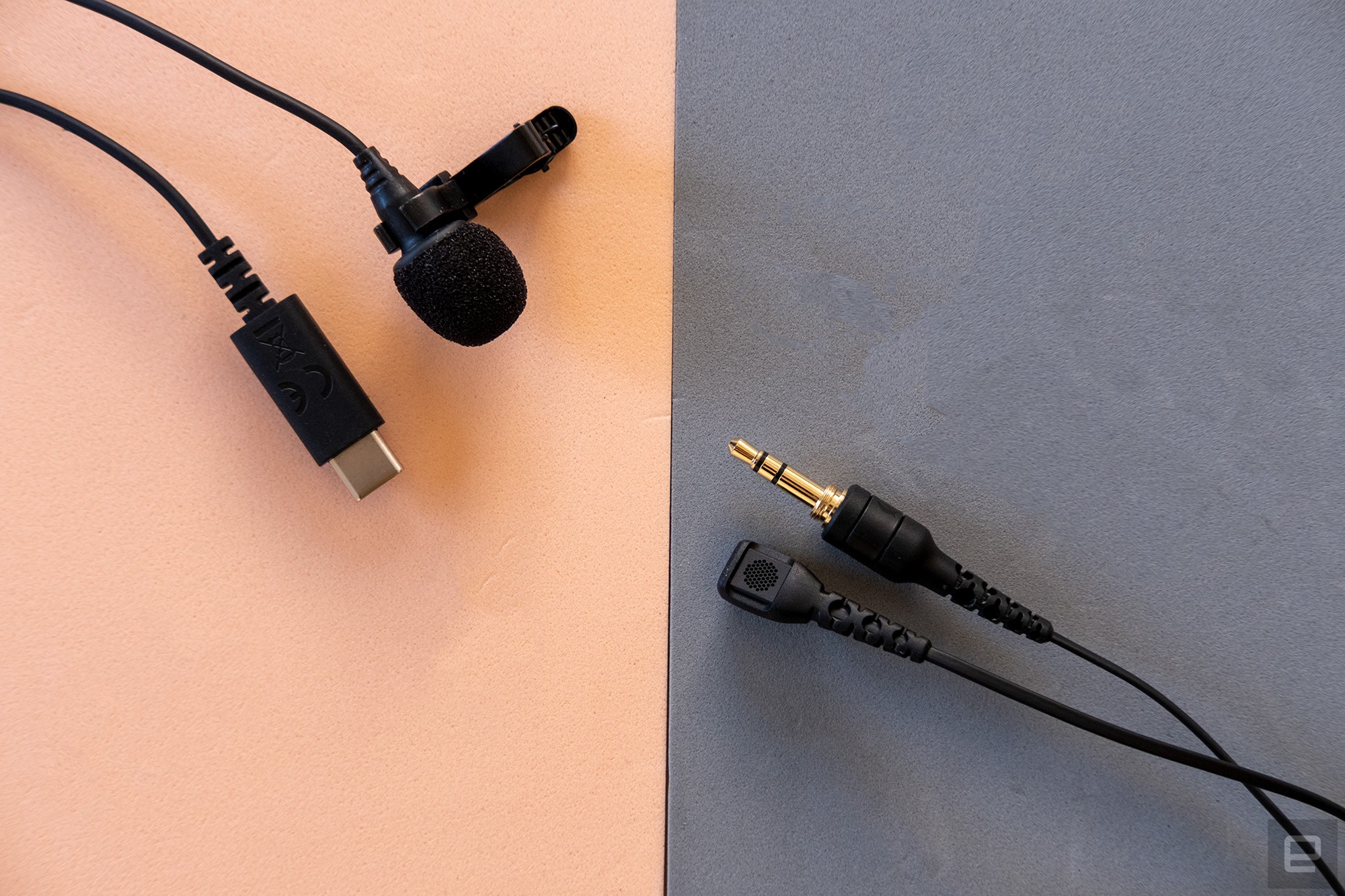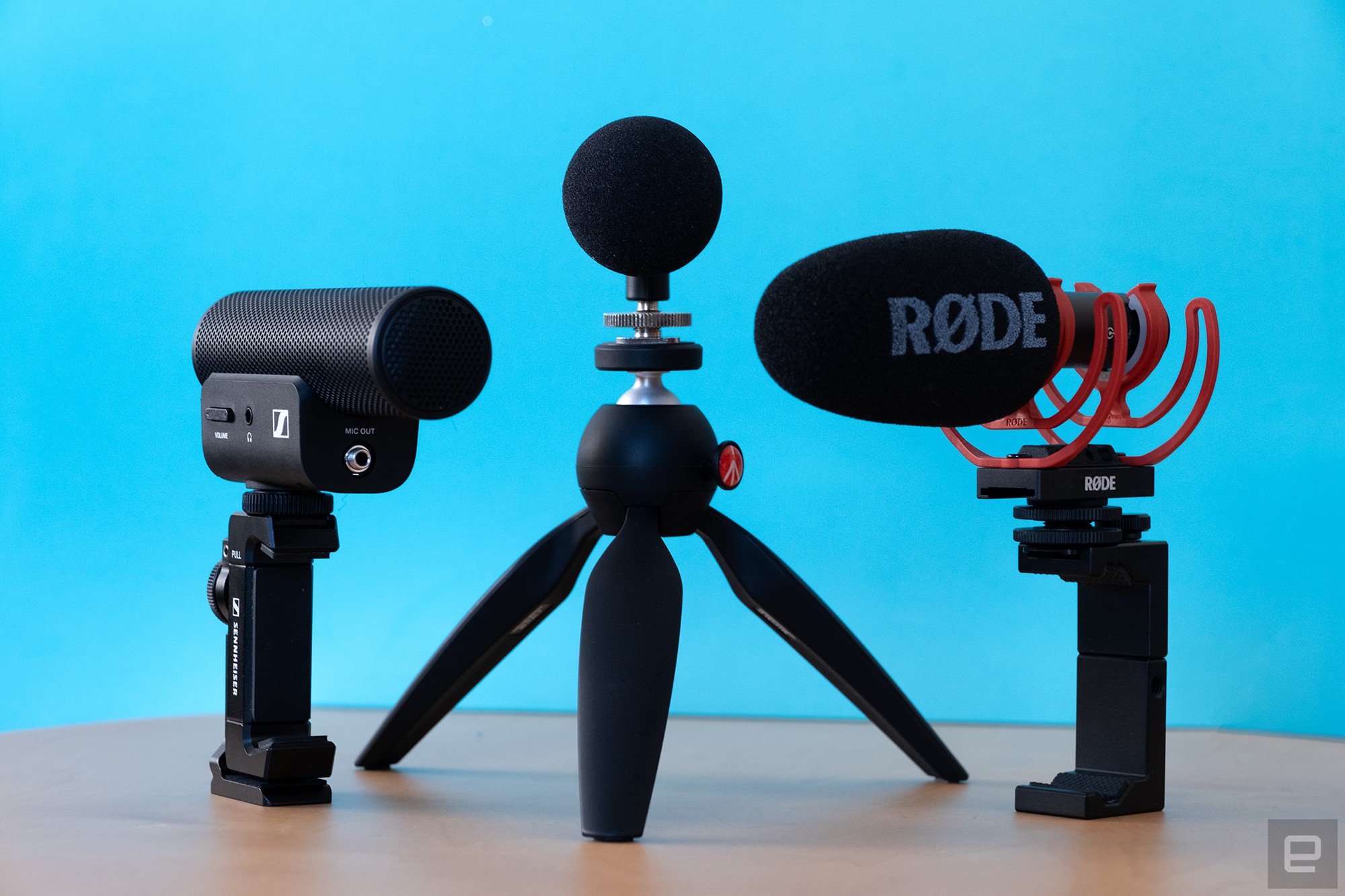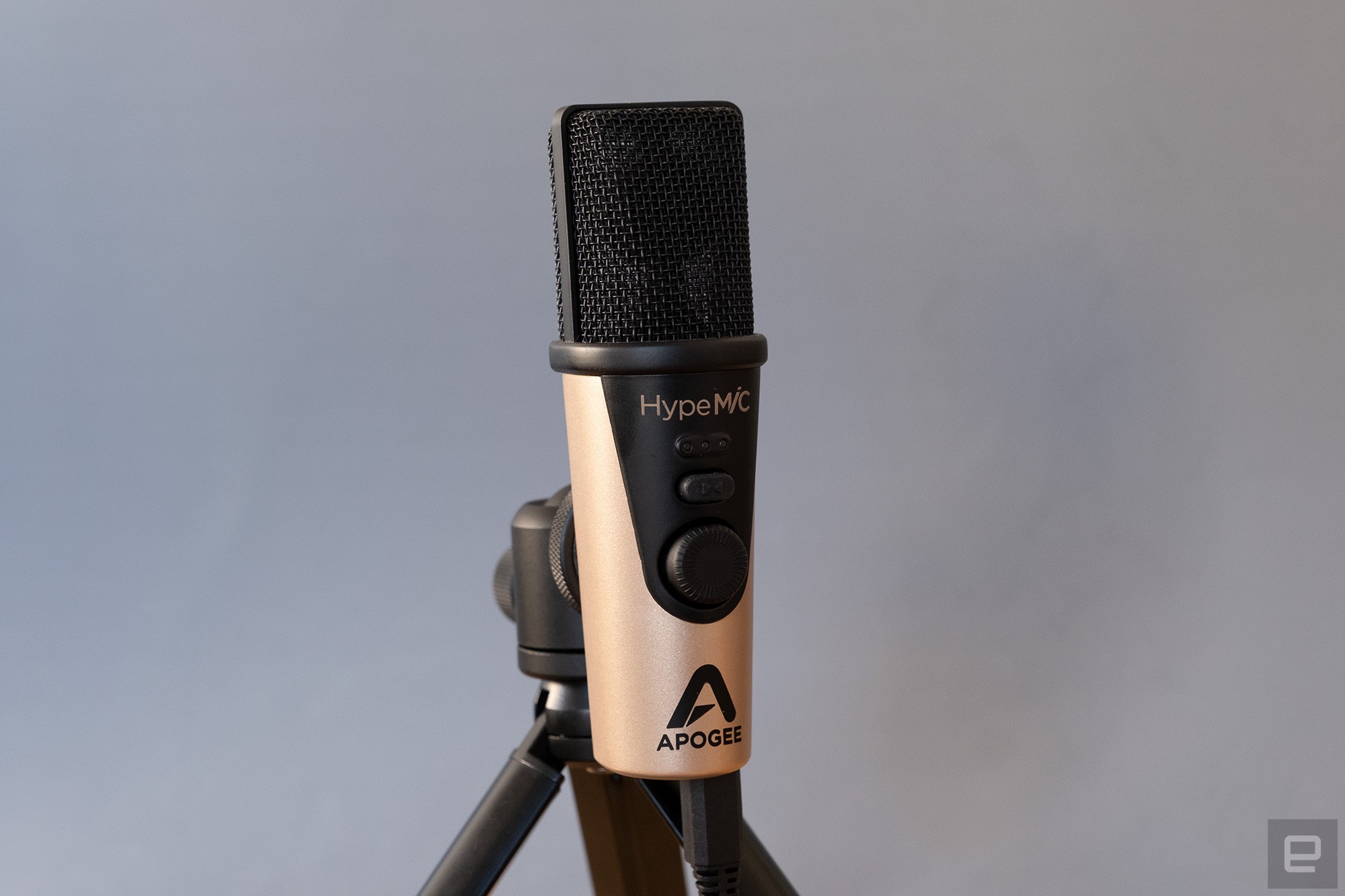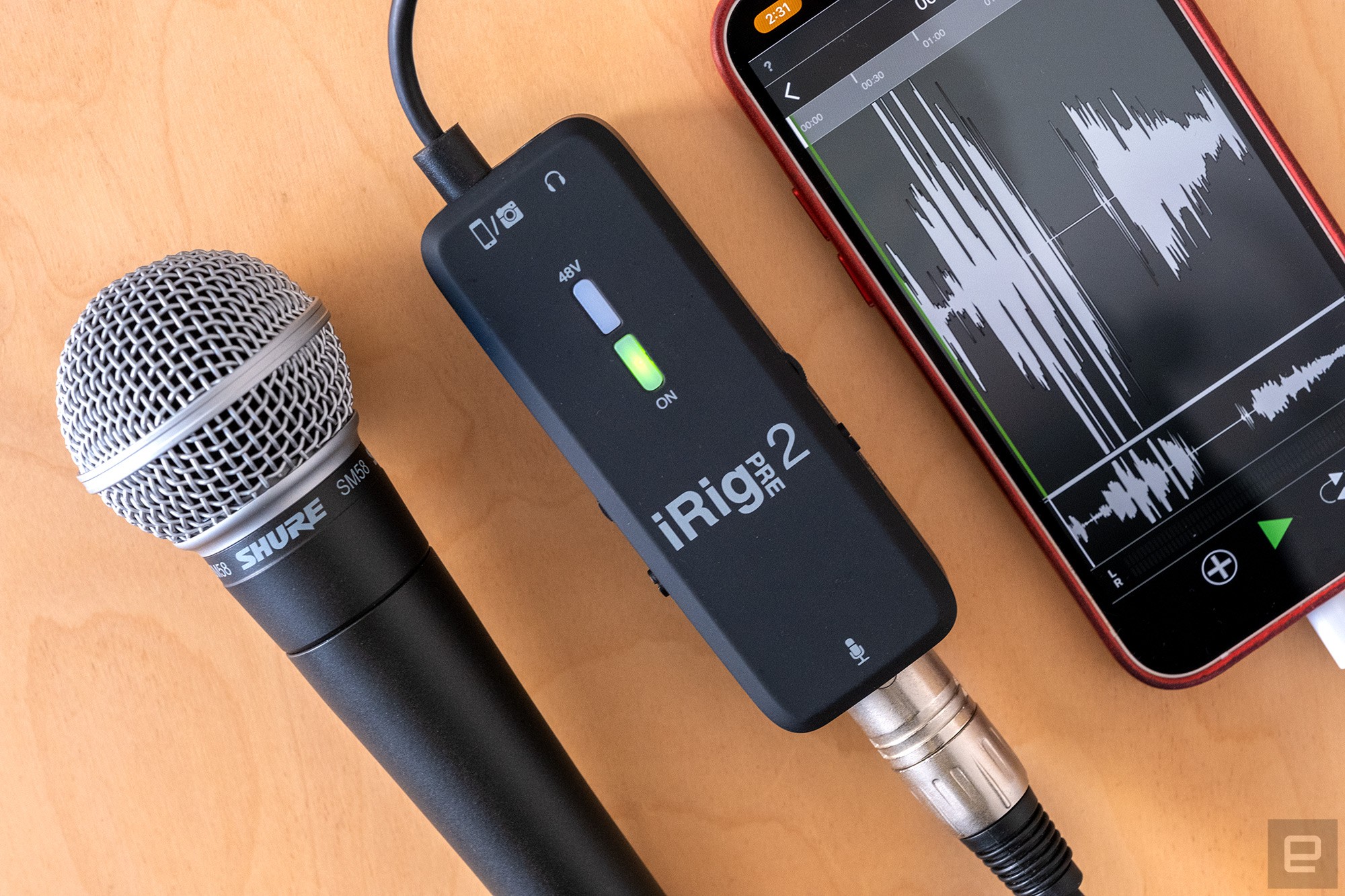If you consider yourself a mobile creator and you’re not using some sort of dedicated microphone, you might be holding yourself back. We’re not judging, but your audience likely is. Audio, especially dialog, is often overlooked, but you need good sound quality if you want your content to stand out. There are many, many options for the home or office/studio, but there are a surprising amount of mobile-specific (or at least, mobile-friendly) solutions out there to elevate your on-the-go recordings be that for social, a jam session, live streaming, making movies, podcasting and beyond.
What “the best mic for iOS or Android” is will vary depending on the task you need it for. If you want to record a TikTok or a podcast or even a jam session, all have slightly different needs but the selection below covers most bases (and maybe even a few you didn’t think of yet) for recording high-quality sound with little more than a mobile phone.
This guide is all about recording audio on the go, free from the constraints of a studio or office, but also far away from luxuries like power outlets, acoustically friendly rooms and a full-size PC. As such there are two styles of external mic that really shine here: Lavalier (lapel) and shotgun. We’ll be covering a few other types, too, but between those, most tasks are covered.
We’ll also show you how you can use the USB mics you may already have with your phone and even ways to connect heavy-duty studio classics (XLR) to your humble handset, but all that will be through accessories. For now, let’s start with the classic clip mics.
Lavalier mics

James Trew / Engadget
The obvious benefit of a lapel microphone is size. Their small profile makes them perfect for presenting to the camera with the flexibility to move around while maintaining consistent audio quality. If you’re a budding TikTok or vlogger it’s definitely worth having one of these mini microphones in your bag.
The main trade-off, however, is that they’re only good for recording the person they’re attached to. If you have two people talking and only one is wearing the mic, you’ll only get good audio for one half of the conversation, so for multi-person recordings you’ll need a mic for each guest and a way to record them at the same time, so costs can go up quickly.
Fortunately, lapel mics have become a very competitive market with good, viable options costing as little as $14.95. For an absolute bargain with a long cord and some connectivity accessories, the Boya BY M1 is hard to argue with. But, while these budget choices are great value, if you want something that should either last longer, is more versatile or just sounds better it’s worth paying a little bit more.
A word on wireless mic
Recently there has been an explosion in mobile-friendly wireless mic systems, but there's one wireless mic we really like. DJI's Mic 2 system provides some important upgrades from its predecessor. Notably, it can connect directly to your smartphone via Bluetooth, and it sports improved AI noise reduction and a bigger touchscreen.
Adapters
So we’ve already touched on this with the AI Micro, which is an adapter of sorts. One of the first things you might bump up against when dealing with mobile audio accessories is TRRS vs TRS connectors. Simply put, 3.5mm TRS is what you might know as the age-old classic headphone jack while TRRS became common for its support for headsets and inline mics. You can easily tell them apart as TRS connectors have two black bands on them while a TRRS has three.
For you, the budding creator, it can be a bit of an annoyance as many 3.5mm lavaliers are going to be TRS and won’t work when plugged into your phone’s headphone adapter. Sometimes your lavalier might include what you need in the box, but otherwise, you’ll want to pick up a TRS to TRRS adapter like this. Of course, some smartphone-specific mics have TRRS connectors already – for those, you’ll want a cable that goes the other way should you want to use it with other devices like a DSLR.
Shotgun mics

James Trew / Engadget
You may be more familiar with shotgun microphones when it comes to video recording. It’s the style of microphone most often found atop a DSLR or mirrorless camera, but they make great companions for other portable devices too, your cell phone included.
The benefit of a shotgun is that they tend to be highly directional, which makes them perfect for podcasts, recording instruments, foley sounds and much, much more. For us mobile recordists, another benefit is that they tend to be light and portable, perfect for slipping into a backpack or even a laptop bag. Even better, there are some great mobile-specific options.
Desktop and USB mics go mobile

James Trew / Engadget
Mobile-specific mics are great, but there’s nothing stopping you from using your phone mic or another you might already have (if it’s somewhat portable). You’ll definitely need to do a little dance with some adapters, but that’s half the fun. Below are a couple of recommendations for “regular” microphones that pair well with a phone and then the cables and adapters that you’ll need to get setup.
A word on cables

James Trew / Engadget
Connecting USB microphones directly to phones is rarely as simple as just one cable, although that’s starting to become more common. In general, Android makes this simpler, but also, thanks to the wide range of manufacturers and software versions you can’t always guarantee things will work smoothly.
The iPhone is a whole other situation. USB microphones have a good chance of working via the USB camera kit we mentioned earlier, but that’s still inelegant sometimes. Frustratingly, some USB-C to Lightning cables will play nice with microphones, but sadly most will not – including Apple’s own. One confirmed option is this cable from Fiio or this generic alternative. These are inexpensive enough that it’s worth having a couple around if you work with audio a lot (they of course can also be used to charge your phone as a bonus).
Other mobile microphones to consider
This article originally appeared on Engadget at https://www.engadget.com/best-mobile-microphones-for-recording-with-a-phone-154536629.html?src=rss
What “the best mic for iOS or Android” is will vary depending on the task you need it for. If you want to record a TikTok or a podcast or even a jam session, all have slightly different needs but the selection below covers most bases (and maybe even a few you didn’t think of yet) for recording high-quality sound with little more than a mobile phone.
This guide is all about recording audio on the go, free from the constraints of a studio or office, but also far away from luxuries like power outlets, acoustically friendly rooms and a full-size PC. As such there are two styles of external mic that really shine here: Lavalier (lapel) and shotgun. We’ll be covering a few other types, too, but between those, most tasks are covered.
We’ll also show you how you can use the USB mics you may already have with your phone and even ways to connect heavy-duty studio classics (XLR) to your humble handset, but all that will be through accessories. For now, let’s start with the classic clip mics.
Lavalier mics
James Trew / Engadget
The obvious benefit of a lapel microphone is size. Their small profile makes them perfect for presenting to the camera with the flexibility to move around while maintaining consistent audio quality. If you’re a budding TikTok or vlogger it’s definitely worth having one of these mini microphones in your bag.
The main trade-off, however, is that they’re only good for recording the person they’re attached to. If you have two people talking and only one is wearing the mic, you’ll only get good audio for one half of the conversation, so for multi-person recordings you’ll need a mic for each guest and a way to record them at the same time, so costs can go up quickly.
Fortunately, lapel mics have become a very competitive market with good, viable options costing as little as $14.95. For an absolute bargain with a long cord and some connectivity accessories, the Boya BY M1 is hard to argue with. But, while these budget choices are great value, if you want something that should either last longer, is more versatile or just sounds better it’s worth paying a little bit more.
A word on wireless mic
Recently there has been an explosion in mobile-friendly wireless mic systems, but there's one wireless mic we really like. DJI's Mic 2 system provides some important upgrades from its predecessor. Notably, it can connect directly to your smartphone via Bluetooth, and it sports improved AI noise reduction and a bigger touchscreen.
Adapters
So we’ve already touched on this with the AI Micro, which is an adapter of sorts. One of the first things you might bump up against when dealing with mobile audio accessories is TRRS vs TRS connectors. Simply put, 3.5mm TRS is what you might know as the age-old classic headphone jack while TRRS became common for its support for headsets and inline mics. You can easily tell them apart as TRS connectors have two black bands on them while a TRRS has three.
For you, the budding creator, it can be a bit of an annoyance as many 3.5mm lavaliers are going to be TRS and won’t work when plugged into your phone’s headphone adapter. Sometimes your lavalier might include what you need in the box, but otherwise, you’ll want to pick up a TRS to TRRS adapter like this. Of course, some smartphone-specific mics have TRRS connectors already – for those, you’ll want a cable that goes the other way should you want to use it with other devices like a DSLR.
Shotgun mics
James Trew / Engadget
You may be more familiar with shotgun microphones when it comes to video recording. It’s the style of microphone most often found atop a DSLR or mirrorless camera, but they make great companions for other portable devices too, your cell phone included.
The benefit of a shotgun is that they tend to be highly directional, which makes them perfect for podcasts, recording instruments, foley sounds and much, much more. For us mobile recordists, another benefit is that they tend to be light and portable, perfect for slipping into a backpack or even a laptop bag. Even better, there are some great mobile-specific options.
Desktop and USB mics go mobile
James Trew / Engadget
Mobile-specific mics are great, but there’s nothing stopping you from using your phone mic or another you might already have (if it’s somewhat portable). You’ll definitely need to do a little dance with some adapters, but that’s half the fun. Below are a couple of recommendations for “regular” microphones that pair well with a phone and then the cables and adapters that you’ll need to get setup.
A word on cables
James Trew / Engadget
Connecting USB microphones directly to phones is rarely as simple as just one cable, although that’s starting to become more common. In general, Android makes this simpler, but also, thanks to the wide range of manufacturers and software versions you can’t always guarantee things will work smoothly.
The iPhone is a whole other situation. USB microphones have a good chance of working via the USB camera kit we mentioned earlier, but that’s still inelegant sometimes. Frustratingly, some USB-C to Lightning cables will play nice with microphones, but sadly most will not – including Apple’s own. One confirmed option is this cable from Fiio or this generic alternative. These are inexpensive enough that it’s worth having a couple around if you work with audio a lot (they of course can also be used to charge your phone as a bonus).
Other mobile microphones to consider
This article originally appeared on Engadget at https://www.engadget.com/best-mobile-microphones-for-recording-with-a-phone-154536629.html?src=rss
